chocolate
These are not things wot I made then ate, OK FINE!, I ate two or three, possibly ten of these little candies, rather they are things wot I made then give away. I give them to waiters, waitresses, hair stylists, building service people, delivery people, visitors, I leave them as tokens of appreciation for the hosts of parties I attend, along with wine or what have you. I recently ran out of these little boxes and that is intolerable because I am now somewhat known for them due to their uniqueness and it is somewhat expected of me to always have them. At least that is what I am imagining is expected, in truth it is quite possible that nobody gives a crap one way or the other. The reason I ran out is not for lack of chocolate, I have about twenty pounds of that, possibly more, but rather because making the little boxes is a pain in the gulutemous maximus glutemous maximus gleutimus maximus bum. The boxes must be printed and that means coaxing one of the printers to cooperate, frequently another unpleasant task --replacing color cartridges, adjusting color, downloading drivers and the like. Then hand cutting multiple dozens of patterns, scoring them, folding and trimming, and finally glueing them together. Makes my back hurt. I am only half way done with that part for this batch.
I learned that women really dig these tiny boxes. That wasn't part of the plan, just something I discovered. It's a lady thing. Kids like them too. Men are generally indifferent. They're more like, "Pffffft. What is this?" I go, "It's chocolate, just take it. Give it to your kid or whatever." Then they go, "Oh, cool."
The chocolate is excellent but I am not sure all that many people can tell the difference. Americans generally grow up on milk chocolate so dark chocolate is sometimes weird to them, somewhat off-putting, although that is rapidly changing. I am actually surprised how many chocolate elitists there are out there, and that fills my heart with glee.
These are the tiny ankh pull tabs. The pattern is Egyptian hieroglyphics, naturally. Honestly, what else would it be? I mean, when one thinks of chocolate the first association one makes is Egypt, no? Actually, everybody I know pretty much accepts that I am a complete freak about Egypt and I suppose they tolerate that eccentricity. They do seem bemused that I actually do know what those pictures say and when they ask and I tell them their visage then reads, "Hmm, all that for just that." In the end it is so much worthless ridiculous nonsense. So why then the obsession?
Anyway, these pull tabs are ankhs, as everybody well knows that means 'life.' One almost never sees an ankh all by itself like this, it is usually combined with a 'djed' and a 'was,' often all piled up on each other into one sign meaning 'life, stability, dominion,' kind of like Spock saying while holding up a 'V' sign using the wrong fingers, "live long and prosper, and oh by the way, keep your back straight while you're at it."
Couverture chocolate. It is what we chocolatiers procure in bulk for the production of candy.
Usually couverture is marketed in the form of discs but this one is not. It is very inconvenient to have to chop it up because the pieces tend to go flying across the room. It is the reason why I had no idea how good this chocolate is compared to the others, even the much more expensive single-source Venezuelan.
Why temper? Chocolate is tempered to strengthen the candy and to stabilize it molecularly. It provides the final product with an attractive sheen and a snap when it is broken.
What is tempering? Tempering is organizing molecules by the use of temperature. Exactly like steel, and I mean EXACTLY like steel, 'cept differ'nt. Chocolate is a complex amalgam of molecules including various fats. It seems odd to read, say, "the melting point of chocolate is 84℉ - 87℉. Hahahahaha. That kills me. See? That is not a point, that is a range. A precise temperature is a point. In fact, each temperature point is actually a set of more precise points. You know, like that famous one, 98.6℉. Everything you ever read about chocolate says that too. The reason why temperature points of chocolate are always stated as a range is because the various constituent molecules all have their own point.
Perhaps an analogy would be useful. Consider the molecules of chocolate to be a bunch of chairs being handled by convention caterers. Raising the temperature a mere 10˚above body temperature enervates the chair handlers and causes them to relax and spread out. Then lowering the temperature a mere 10˚ below body temperature excites the chair handlers into activity of stacking the chairs for storage. But there are Eames chairs, Saarinen chairs, Mies Van der Rohe chairs, Adirondack chairs, folding chairs, wooden chairs, and metal chairs. They do not stack perfectly and the storage closet is a mess even though the chair handlers did their best to stack them, just as crystals form in line one upon another as the crystal formation progresses. So then the temperature is raised again to relax the frenetic organizing, but not as much as the first time and some of the mis-stacked chairs fall out of line and become available for improved positioning as the temperature drops again naturally without mechanical effort of tempering . This analogy isn't working out very well. Come to think about it, chocolate crystalizing is nothing at all like stacking chairs. Forget about chairs.
This tempering machine can take the chocolate to the precise temperature deemed perfect to stabilize any type of chocolate, white, milk, or dark. It can go straight to the temperature to the tenth of a degree. But I do not trust it. I use the go up, then go down, then go back up method, which oddly, the manufacturer calls the 'two temperature method.'
Whatever.
The temperature is taken to 108℉, then down to 85℉, then back up to 94℉. Chocolate melts just above body temperature. That's why it is so amazing in your mouth. You will notice the final working temperature is below the melting point, not above it. How can this be? Well, hardened chocolate is not like frozen water. Water is more like a single type of molecule, and as already noted, chocolate is more complex than that. If that explanation is difficult to accept then try this: because I said so. At 85℉ the machine signals the operator to drop a piece of "seed" chocolate into the cleared half of the bowl. Basically, this shows or it suggests to the melted portion how to organize its crystals. Otherwise it would organize into a bunch of poorly stacked chairs. Oh wait, I forgot, we're not talking about chairs anymore.
I made these silicone molds ↓ because I couldn't find what I wanted and I looked at thousands of chocolate molds. Now someone does make hieroglyphic candy molds and sells them on eBay, and they're fairly good too, but they're too large for my purpose and I already made these years before those appeared. Plus, it's like one mold for one glyph and not one mold for a set of glyphs like ordinary chocolate molds. It would take forever to crank out a batch like this.
Here's how I made these molds. I poured a sheet of plaster about 1/2 inch thick, drew the glyphs, then carved away the background using dental tools. Then I made a reverse mold, one for each glyph, using food-safe silicone. Then I poured new plaster into each mold to produce a set of positive glyphs. I poured plaster into regular chocolate mint molds, square and round. Then I glued the plaster glyphs onto the plaster square and round mint shapes. I produced sets of eight for each glyph. Then I fashioned frames for the sets using plastic edging I bought in lengths at Home Depot. Cut the lengths and hot-glued them together into rectangular frames. Arranged the sets of mint-glyphs inside the frames and poured liquid food-grade silicone over the positive molds to create a reverse silicone mold for sets of glyphs. Each mold contains eight negatives of any given glyph. I had no idea what I was doing. It was all one big experiment. I produced two full sets of sets of negative silicone molds, the fist set using a slow drying silicone, and the second set using a faster drying silicone. The first set (yellow) is quite ugly and lumpy and poorly executed, the second full set (orange) is better but not perfect. I have been using both full sets ever since and the whole time I still think I could do a lot better were I to do it again. But now I'm burned out on the whole business so I just stick with what I have and live with it.
This chocolate tempering works better in cold weather because I can put the trays holding the molds outside on the patio instead of clearing space in the refrigerator. This is the fun part. One teaspoon of melted tempered chocolate goes into each depression in a mold.
These are the paper wrappers for the candy ↓. There is a thin paper between each foil. So each paper is double. They are difficult to separate. I have a boat-load of these packages. Enough to last a few years.
The candy in wrapped in batches so that the chocolate does not have time to drop out of temper, I mean rise out of temper. The rest is still outside keeping cold. As they are finished they're transferred to the refrigerator in a bowl and then boxed. The boxes are returned to the refrigerator and from there distributed as the need arises.
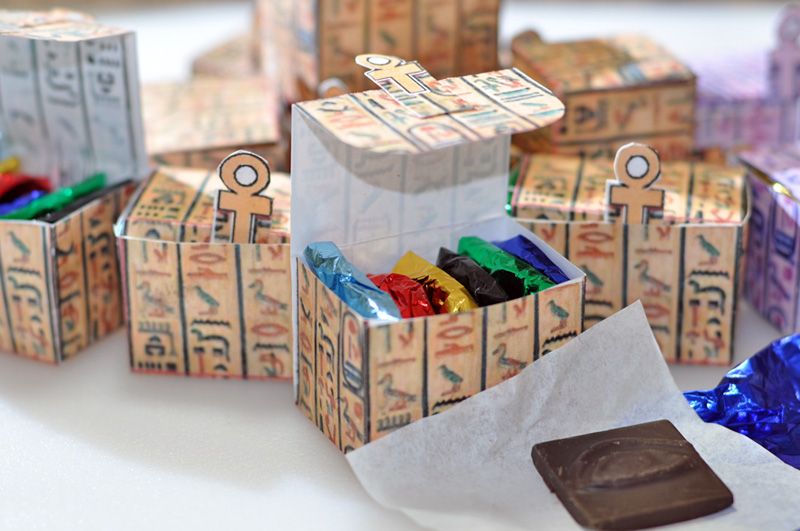
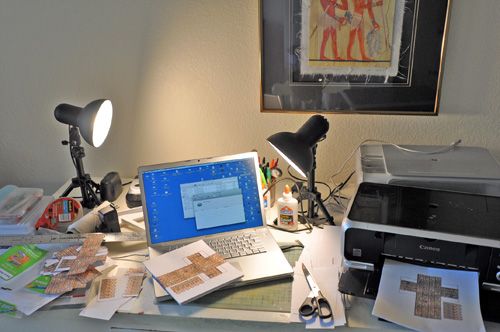
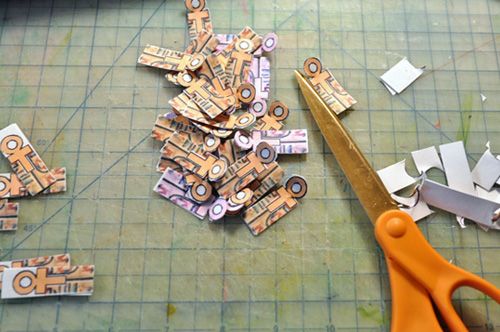

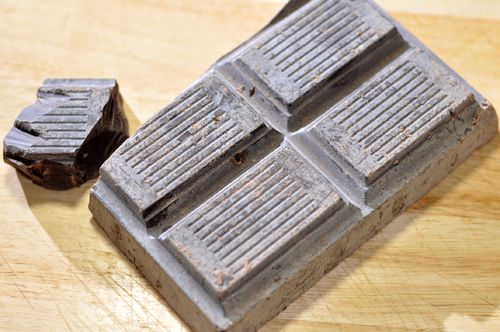
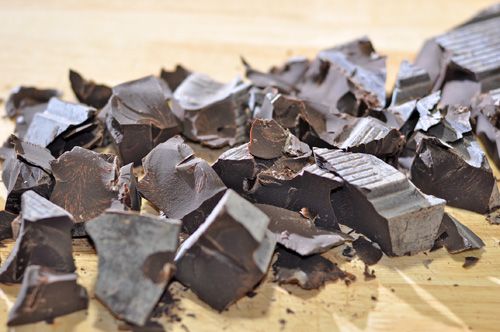

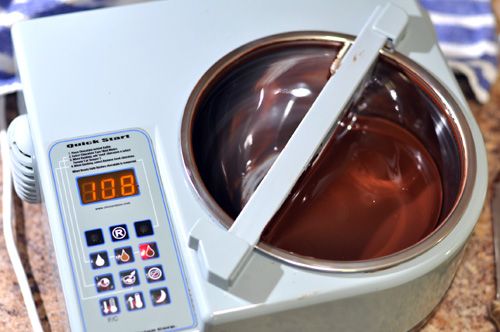
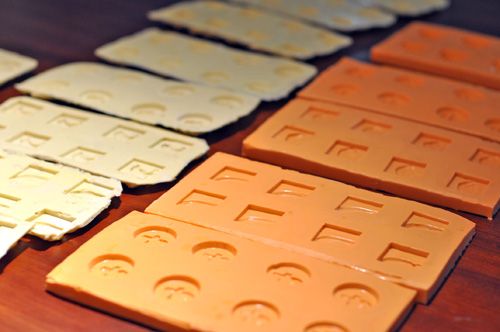
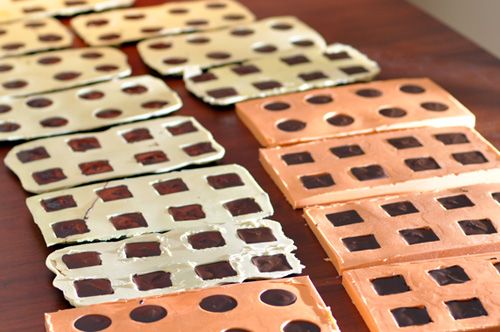

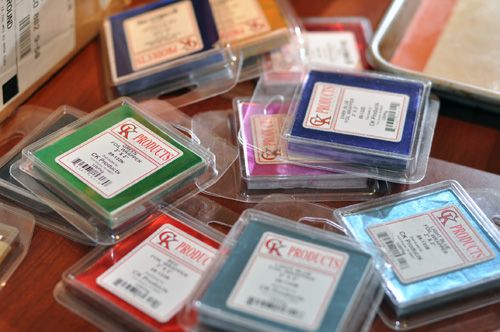
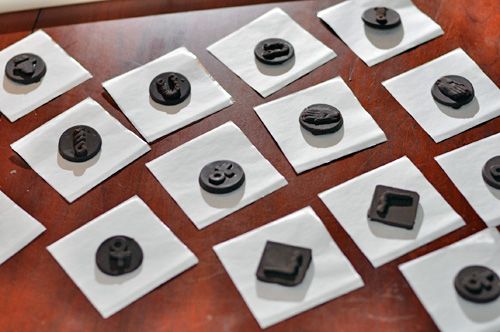
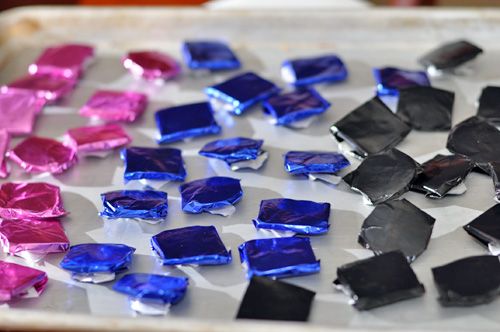
No comments:
Post a Comment